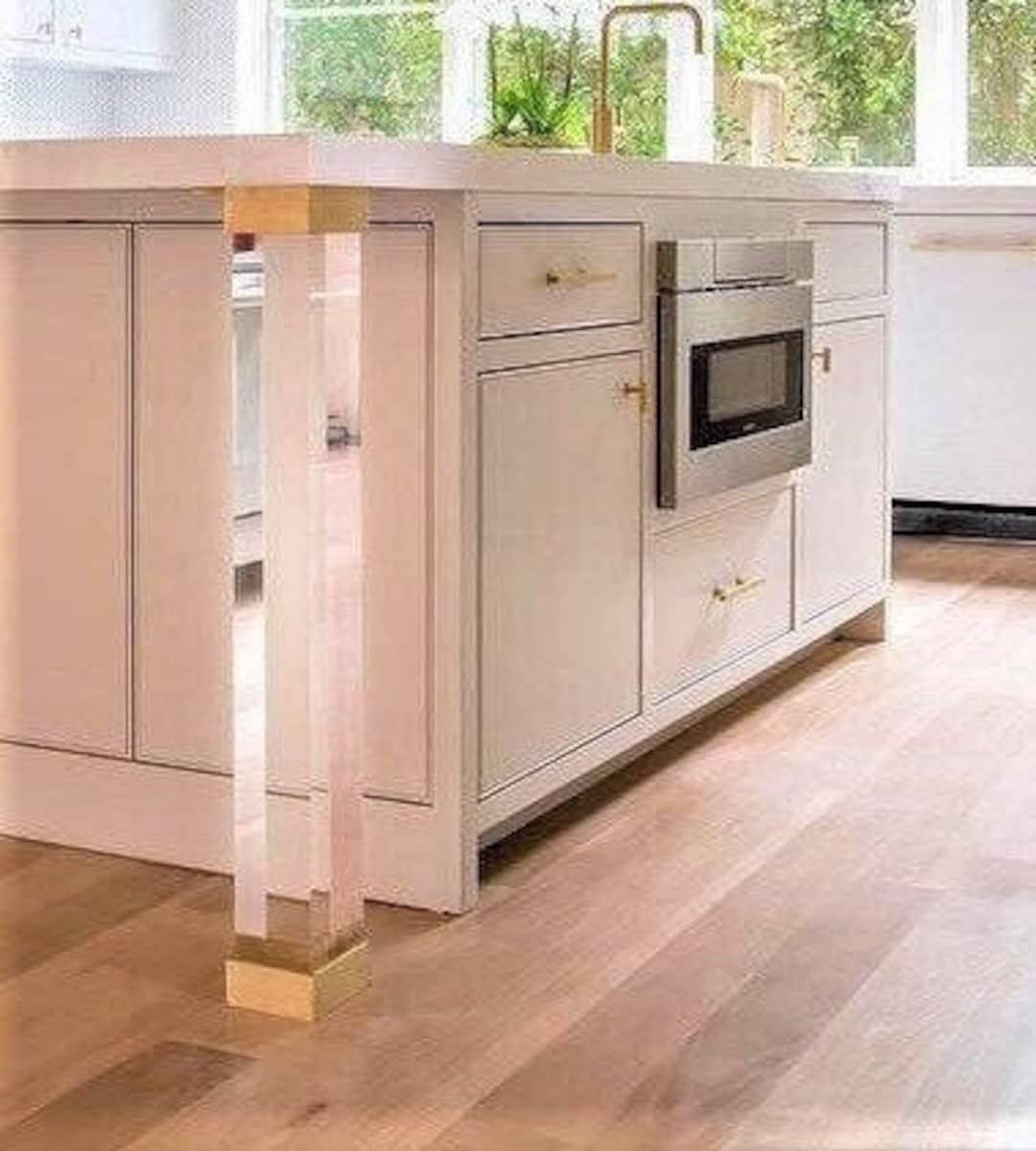An Overview to Choosing the Perfect Legs For Kitchen Area Island for Your Home
Selecting the perfect legs for your cooking area island is a nuanced choice that affects both the capability and visual allure of this main area. Factors such as elevation, products, and design play an important function in balancing your island with the total kitchen area style. In addition, understanding the value of stability and maintenance can dramatically affect your selection. As you think about these aspects, it comes to be obvious that the right legs can transform not just the appearance of your kitchen but likewise its functionality for many years ahead. What specific functions should you prioritize in this selection process?

Recognizing Kitchen Island Legs
When choosing legs for a kitchen area island, it's necessary to understand their functional and aesthetic duties in the overall style. The legs work as a crucial support group, ensuring stability and sturdiness for the island, which often works as a work space, dining area, or collecting area. The option of material and building method must be durable enough to withstand everyday usage and potential wear.
Along with their architectural obligations, legs add significantly to the island's visual appeal. They can boost the cooking area's style, whether through conventional, modern, or diverse layouts. The height and percentage of the legs are also vital considerations; they need to harmonize with the island's kitchen counter elevation while making certain comfy seating for those using the room.
Moreover, the leg layout can influence the general flow of the cooking area. Open, airy leg styles can create a sense of agility, while strong, substantial legs may convey an extra grounded and stable visual - Legs For Kitchen Island. Understanding these practical and visual elements will lead property owners in making educated selections that enhance their kitchen area's design and enhance its functionality
Popular Styles and Products
The selection of legs for a kitchen area island encompasses a selection of prominent styles and materials, each offering one-of-a-kind qualities that can improve both performance and looks. Among one of the most in-demand styles are contemporary, rustic, and standard. Contemporary legs frequently include streamlined, minimal designs that highlight simpleness and clean lines, making them ideal for modern-day cooking areas. Rustic designs, on the various other hand, welcome natural environments and frequently display redeemed wood or distressed coatings, including warmth and appeal to the area. Typical legs normally display elaborate details and workmanship, boosting classic kitchen area styles.

Height and Security Considerations

The legs of the kitchen island need to offer ample support, making sure that the structure can stand up to day-to-day usage without changing or wobbling. Material choice plays a significant duty in stability; steel legs, for instance, have a tendency to supply better toughness compared to timber.
Matching Your Kitchen Area Visual
Selecting the ideal legs for your cooking area island goes beyond like this capability; it additionally plays a considerable function in the general visual of the space (Legs For Kitchen Island). When picking legs, consider the design style of your cooking area.
Shade is one more critical aspect. Legs that enhance or contrast with your island's surface area and surrounding cabinets can develop aesthetic harmony or striking centerpieces. As an example, matching dark wood legs with a light marble countertop can add depth and rate of interest. Additionally, take into consideration the coating of the legs; matte, glossy, or textured finishes can substantially affect the general feeling of the kitchen.
Installment and Upkeep Tips
Installing kitchen area island legs needs mindful attention to information to ensure both security and visual appeal. Utilize a stud finder to situate wall studs if you are connecting the legs to a wall or utilizing brackets for added support.
When securing the legs, make use of premium screws and, if essential, wood glue for additional stamina. For metal legs, guarantee that you are using suitable supports and devices to stop damages to your flooring. It Our site is suggested to check for levelness after installment, making adjustments as required to prevent tottering.
Upkeep is similarly essential for durability - Legs For Kitchen Island. Frequently check the legs for any kind of signs of wear or loosening, especially in high-traffic locations. Tidy the legs with an appropriate cleaner, preventing rough materials that might scrape the surface area. For wood legs, take into consideration using a timber conditioner occasionally to keep their visit the website surface. By complying with these installment and upkeep tips, you can ensure that your kitchen island legs continue to be both visually attractive and functional.
Final Thought
In conclusion, choosing the proper legs for a kitchen area island requires mindful consideration of elevation, stability, and aesthetic compatibility. Ultimately, thoughtful leg selection plays an essential duty in boosting both the practicality and layout of the cooking area room.
When selecting legs for a kitchen island, it's vital to recognize their useful and visual duties in the total style. Open, airy leg styles can develop a feeling of lightness, while solid, significant legs might share an extra based and secure aesthetic. The legs of the kitchen area island must offer appropriate assistance, guaranteeing that the structure can withstand day-to-day usage without tottering or changing.Mounting kitchen island legs calls for mindful interest to detail to make certain both stability and aesthetic charm.In conclusion, picking the appropriate legs for a kitchen island demands careful consideration of height, security, and visual compatibility.